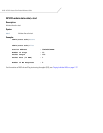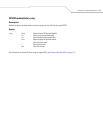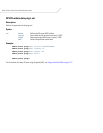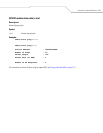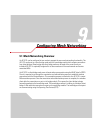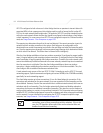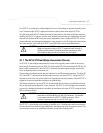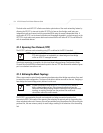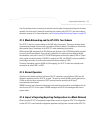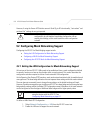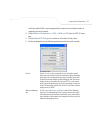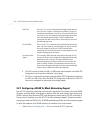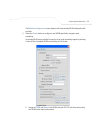
AP-5131 Access Point Product Reference Guide
9-2
AP-5131s configured as both a base and a client bridge function as repeaters to transmit data with
associated MUs in their coverage area (client bridge mode) as well as forward traffic to other AP-
5131s in the mesh network (base bridge mode). The number of AP-5131s and their intended function
within the mesh network dictate whether they should be configured as base bridges, client bridges
or both (repeaters). For a use case on how AP-5131s are configured in respect to a fictional business
need, see Usage Scenario - Trion Enterprises on page 9-18.
The spanning tree determines the path to the root and detects if the current connection is part of a
network loop with another connection in the system. Each bridge can be configurable so the
administrator can control the spanning tree to define the root bridge and what the forwarding paths
are. Once the spanning tree converges, both access points begin learning which destinations reside
on which side of the network. This allows them to forward traffic intelligently.
After the client bridge establishes at least one wireless connection (if configured to support mobile
users), it begins beaconing and accepting wireless connections. If configured as both a client bridge
and a base bridge, it begin accepting client bridge connections. Therefore, the mesh network could
connect simultaneously to different networks in a manner whereby a network loop is not created and
then the connection is not blocked. Once the client bridge establishes at least one wireless
connection, it begins establishing other wireless connections as it finds them available. Thus, the
client bridge is able to establish simultaneous redundant links.
A mesh network must use one of the two AP-5131 LANs. If intending to use the AP-5131 for mesh
networking support, Symbol recommends configuring at least one WLAN (of the 16 WLANs available)
specifically for mesh networking support.
The client bridge creates up to three connections if it can find base bridges for connection. If the
connections are redundant (on the same network), then one connection will be forwarding and the
others blocked. However, if each of the connections links to a different wired network, then none are
redundant and all are forwarding. Thus, the bridge automatically detects and disables redundant
connections, but leaves non-redundant connections forwarding. This gives the user the freedom to
configure their topology in a variety of ways without limitations. This is important when configuring
multiple AP-5131s for base bridge support in areas like a shipping yard where a large radio coverage
area is required. For more information on configuring the AP-5131 in respect to specific usage
scenarios, see Usage Scenario - Trion Enterprises on page 9-18
.
NOTE Since each AP-5131 can establish up to 3 simultaneous wireless
connections, some of these connections could be redundant. If this is the
case, the STP algorithm defines which links are the redundant links and
disables those links from forwarding.



